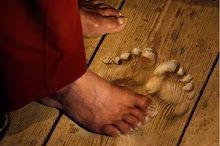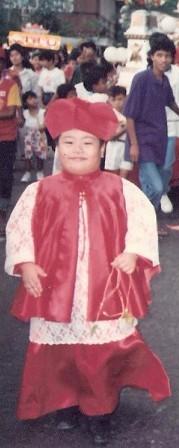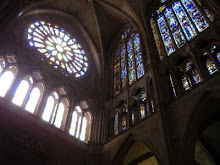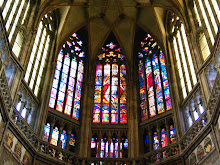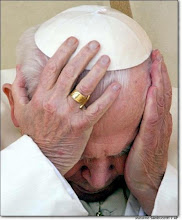Ronald Rolhisrer, OMI
April 6, 2015
Something there is that needs a crucifixion. Everything that’s good eventually gets scapegoated and crucified. How? By that curious, perverse dictate somehow innate within human life that assures that there’s always someone or something that cannot leave well enough alone, but, for reasons of its own, must hunt down and lash out at what’s good. What’s good, what’s of God, will always at some point be misunderstood, envied, hated, pursued, falsely accused, and eventually nailed to some cross. Every body of Christ inevitably suffers the same fate as Jesus: death through misunderstanding, ignorance, and jealousy.
But there’s a flipside as well: Resurrection always eventually trumps crucifixion. What’s good eventually triumphs. Thus, while nothing that’s of God will avoid crucifixion, no body of Christ stays in the tomb for long. God always rolls back the stone and, soon enough, new life bursts forth and we see why that original life had to be crucified. (“Wasn’t it necessary that the Christ should so have to suffer and die?”) Resurrection invariably follows crucifixion. Every crucified body will rise again. Our hope takes its root in that.
But how does this happen? Where do we see the resurrection? How do we experience resurrection after a crucifixion?
Scripture is subtle, though clear, on this. Where can we expect to experience resurrection? The gospel tell us that, on the morning of the resurrection, the women-followers of Jesus set out for the tomb of Jesus, carrying spices, expecting to anoint and embalm a dead body. Well-intentioned but misguided, what they find is not a dead body, but an empty tomb and an angel challenging them with these words: “Why are you looking for the living among the dead? Go instead into Galilee and you will find him there!”
Go instead into Galilee. Why Galilee? What’s Galilee? And how do we get there?
In the gospels, Galilee is not simply a geographical location, a place on a map. It is first of all a place in the heart. As well, Galilee refers to the dream and to the road of discipleship that the disciples once walked with Jesus and to that place and time when their hearts most burned with hope and enthusiasm. And now, after the crucifixion, just when they feel that the dream is dead, that their faith is only fantasy, they are told to go back to the place where it all began: “Go back to Galilee. He will meet you there!”
And they do go back to Galilee, both to the geographical location and to that special place in their hearts where once burned the dream of discipleship. And just as promised, Jesus appears to them. He doesn’t appear exactly as he was before, or as frequently as they would like him to, but he does appear as more than a ghost and a memory. The Christ that appears to them after the resurrection is in a different modality, but he’s physical enough to eat fish in their presence, real enough to be touched as a human being, and powerful enough to change their lives forever. Ultimately that’s what the resurrection asks us to do: To go back to Galilee, to return to the dream, hope, and discipleship that had once inflamed us but has now been lost through disillusionment.
This parallels what happens on the road to Emmaus in Luke’s gospel, where we are told that on the day of the resurrection, two disciples were walking away from Jerusalem towards Emmaus, with their faces downcast. An entire spirituality could be unpackaged from that simple line: For Luke, Jerusalem means the dream, the hope, and the religious centre from which all is to begin and where ultimately, all is to culminate. And the disciples are “walking away” from this place, away from their dream, towards Emmaus (Emmaus was a Roman Spa), a place of human comfort, a Las Vegas, or Monte Carlo. Since their dream has been crucified, the disciples are understandably discouraged and are walking away from it, towards some human solace, despairing in their hope: “But we had hoped!”
They never get to Emmaus. Jesus appears to them on the road, reshapes their hope in the light of their disillusionment, and turns them back towards Jerusalem.
That is one of the essential messages of Easter: Whenever we are discouraged in our faith, whenever our hopes seem to be crucified, we need to go back to Galilee and Jerusalem, that is, back to the dream and the road of discipleship that we had embarked upon before things went wrong. The temptation of course, whenever the kingdom doesn’t seem to work, is to abandon discipleship for human consolation, to head off instead for Emmaus, for the consolation of Las Vegas or Monte Carlo.
But, as we know, we never quite get to Las Vegas or Monte Carlo. In one guise or another, Christ always meets us on the road to those places, burns holes in our hearts, explains our latest crucifixion to us, and sends us back – and to our abandoned discipleship. Once there, it all makes sense again.
06 April 2015
04 April 2015
Wood and Nails and Colored Eggs
by: Martin Bell
WOOD
Something like an eternity ago, human beings got all caught up in the illusion that being human is a relatively unimportant sort of proposition. Here today – gone tomorrow. A vale of tears – that sort of foolishness.
What’s more tragic, of course, is that in the wake of this basic error there quickly followed that human beings are expendable, which easily degenerated into the proposition that some human beings are expendable. Really bad guys are expendable. Guys with low I.Q.’s are expendable. Anyone who disagrees with me is expendable. A long time ago, human beings got all caught up in the illusion that being human is a relatively unimportant sort of proposition.
Well, that’s not true. It’s wrong. All wrong. And it has always been wrong. From the creation of the heavens and the earth, it has been – wrong. There is nothing more important then being human. Our lives have eternal significance. And no one – absolutely no one – is expendable.
NAILS
Jesus was dead. He was dead and buried. It was expedient that he should be dead and buried. Caiaphas had explained that to himself and to the others over and over again. It is expedient, he said, that one man should die for the sake of the people. Jesus is expendable. Caiaphas suffered from the illusion that being human is relatively unimportant. And so Jesus was dead.
What happened then wasn’t so remarkable, really. God simply raised Jesus from the dead. He merely walked into the tomb that we call insignificance and absurdity, and meaninglessness, and other such names as that – he merely walked into the tomb and raised Jesus from the dead.
There was nothing very spectacular or remarkable about this. God revealed himself to be the same God who created the heavens and the earth and called his creation good; the same God who led his people out of Egypt to be a light to the nations; the same God who affirmed David in his weakness; who called forth the prophets; who kindled the heart of John the Baptist; and who reached out to touch his tiny children in the person of Jesus Christ.
God raised Jesus from the dead to the end that we should be clear – once and for all – that there is nothing more important than being human. Our lives have eternal significance. And no one – absolutely no one – is expendable.
COLORED EGGS
Some human beings are fortunate enough to be able to color eggs on Easter. If you have a pair of hands to hold the eggs, or if you are fortunate enough to be able to see the brilliant colors, then you are twice blessed.
This Easter some of us cannot hold the eggs, others of us cannot see the colors, many of us are unable to move at all – and so it will be necessary to color eggs in our hearts.
This Easter there is a hydrocephalic child lying very still in a hospital bed nearby with a head the size of a pillow and vacant, unmoving eyes, and he will not be able to color Easter eggs, and he will not be able to color Easter eggs in his heart, and so God will have to color eggs for him.
And God will color eggs for him. You can bet your life and the life of the created universe on that.
At the cross of Calvary God reconsecrated and sanctified wood and nails and absurdity and helplessness to be continuing vehicles of his love. And then he simply raised Jesus from the dead. And they both went home and colored eggs.
20 March 2015
11 March 2015
This is how...
“This is how the Lord acts: He does things simply. He speaks silently to you, to the heart. Let us remember in our lives the many time we have felt these things: the humility of God is His style; the simplicity of God is His style. And even in the liturgical celebration, in the sacraments, what is beautiful is that which manifests the humility of God, and not the worldly spectacle. It would do us good to journey through our life and to consider the many times the Lord has visited us with His grace, and always with this humble style, the style He calls us, too, to have: humility.”
—Pope Francis, daily homily, 3/9/15
(via)
25 February 2015
once we are seen as god sees us
We
do not believe in ourselves until someone reveals that something deep
inside us is valuable, worth listening to, worthy of our trust, sacred
to our touch. Once we believe in ourselves we can risk curiosity,
wonder, spontaneous delight or any experience that reveals the human
spirit.
e.e. cummings
e.e. cummings
16 February 2015
14 February 2015
05 January 2015
Now it begins...
When the star in the sky is gone,
When the Kings and Princes are home,
When the shepherds are back with their flocks,
The work of Christmas begins:
When the Kings and Princes are home,
When the shepherds are back with their flocks,
The work of Christmas begins:
To find the lost
To heal the broken
To feed the hungry
To release the prisoner
To teach the nations
To bring Christ to all
To make music in the heart.
To heal the broken
To feed the hungry
To release the prisoner
To teach the nations
To bring Christ to all
To make music in the heart.
— Howard Thurman
Subscribe to:
Posts (Atom)







